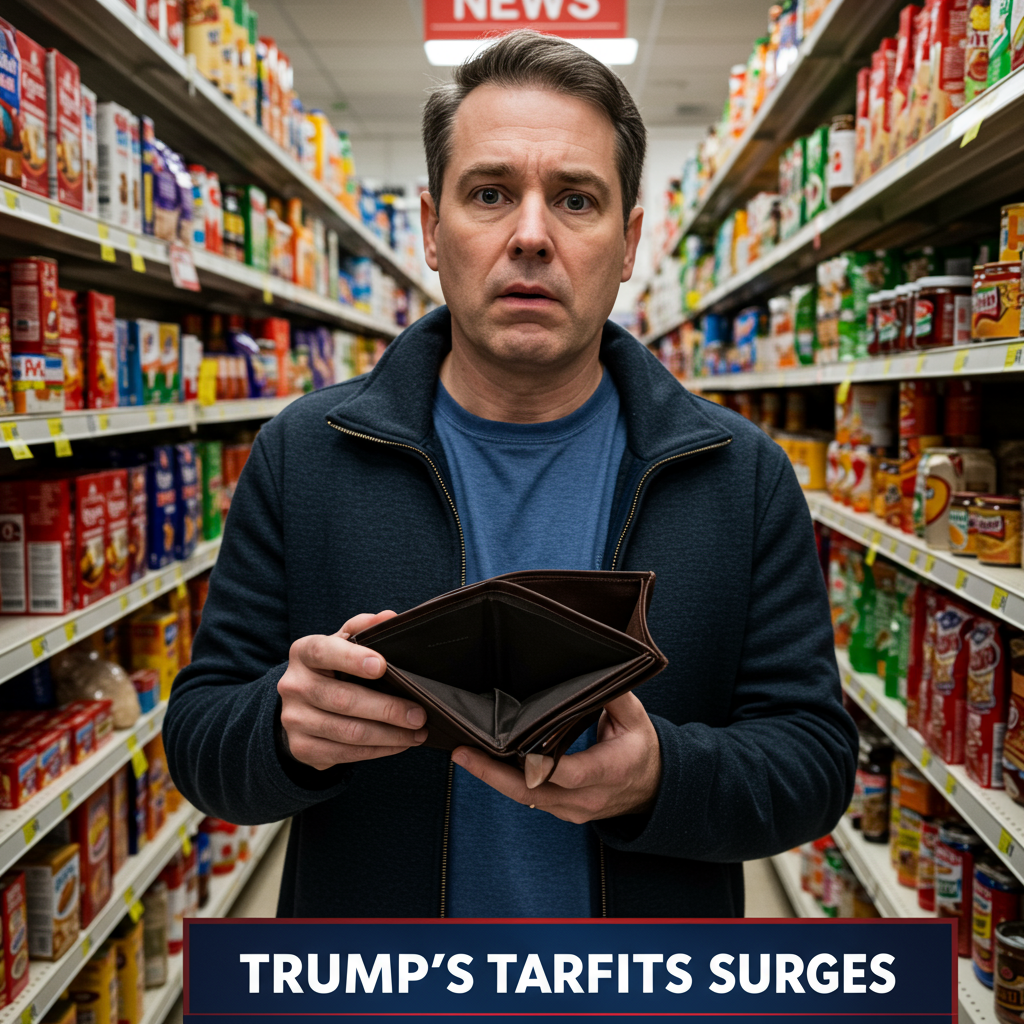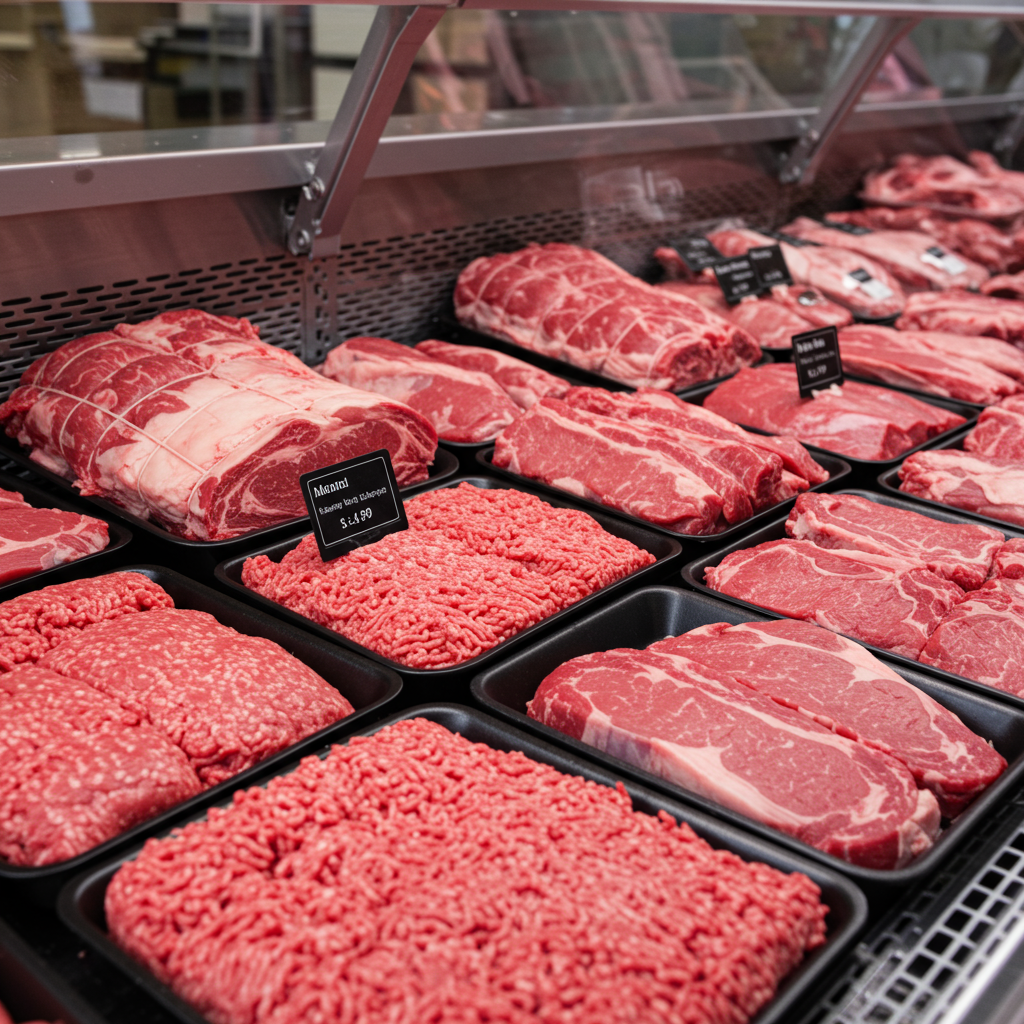For months, American businesses quietly absorbed the rising costs imposed by Trump’s tariffs, often to shield consumers from direct price hikes. This era of absorption, however, is ending. New data reveals a significant shift: producers and manufacturers are now sharply increasing their prices, signaling that higher costs are inevitably filtering down to the wallets of everyday American consumers. This unfolding dynamic is reshaping the economic landscape, impacting everything from the grocery aisle to the broader financial markets.
The Alarming Rise of Wholesale Inflation
The latest economic indicators paint a clear picture of escalating costs within the supply chain. In July, wholesale inflation surged at its fastest monthly pace since June 2022. The Producer Price Index (PPI), which measures the average change in prices paid to domestic producers, jumped a significant 0.9% from June. This pushed the annual rate to 3.3%, far exceeding economists’ expectations of a mere 0.2% monthly rise and a 2.4% annual increase.
Economists widely view the PPI as a critical early indicator for future consumer prices. Chris Rupkey, chief economist at FwdBonds, noted that “producers are starting to feel the inflation fire heat.” He anticipates that it’s only a matter of time before these higher, tariff-related costs are passed directly to “inflation-weary consumers.” Brian Bethune, an economist at Boston College, further warned that since the PPI focuses solely on domestic output, the full inflationary impact on consumers, which includes imported goods, could be severely underestimated. This unexpected acceleration in producer prices immediately sent ripples through financial markets. Major indexes like the Dow, S&P 500, and Nasdaq Composite all saw declines at the opening bell, reflecting investor apprehension. Moreover, the report led traders to scale back their expectations of a Federal Reserve benchmark lending rate cut in September. Chris Zaccarelli, chief investment officer at Northlight Asset Management, called the PPI spike an “unwelcome surprise,” especially given earlier benign Consumer Price Index (CPI) numbers. This shift, he suggested, would likely “unwind some of the optimism of a ‘guaranteed’ rate cut next month.” Excluding volatile food and energy components, core PPI also spiked by 0.9%, reaching an annual rate of 3.7% – its highest level since March.
Tariffs: The Unseen Force Behind Rising Costs
A central factor contributing to these escalating producer costs is the direct impact of Trump’s tariffs. While the full effects were initially delayed due to companies front-loading imports and absorbing costs, the true financial burden is now “coming home to roost.” Many businesses, anticipating the tariffs, had stockpiled goods as early as last winter. Retailers like Best Buy rushed electronics from Asia, while American Fireworks Company and pet-gear seller Barton O’Brien borrowed funds to fill their warehouses with Chinese supplies. This created “peak season” activity in winter ports, temporarily deferring price hikes.
However, as these stockpiles dwindle and new import shipments face higher tariffs, companies can no longer absorb the full impact. Joe Brusuelas, chief economist at RSM US, explicitly stated that pricing pressures from industrial goods, a “targeted area of tariffs,” are now “spilling over to the service sector,” creating significant “pipeline pressures for inflation.” Over three-quarters of the unexpected monthly PPI increase stemmed from services, notably a sharp 4.5% jump in purchased capital equipment prices. On the goods side, higher food prices were a major driver of a 0.7% monthly increase, with raw agricultural products leaping 12.8% from June. Fresh and dry vegetables alone saw a dramatic 38.9% monthly price surge, the largest since March 2022. Brusuelas directly attributed this to “tariffs that were slapped on Mexican agricultural imports.”
While some firms, like Yedi Houseware, Diageo, General Motors, and Stellantis, initially absorbed a substantial portion of tariff expenses, the sustained pressure is forcing a change. Consumer giants like Procter & Gamble are now planning price increases on a quarter of their products. Toymaker Hasbro, after initially offsetting tariff impacts through cost-cutting and supplier shifts, is also implementing “targeted” price increases. The Yale Budget Lab estimates that these higher tariffs will eventually cost U.S. households about $2,400 this year, signaling that the era of business absorption is truly over.
Beyond the Numbers: Broader Economic & Global Ripples
The ripple effect of Trump’s tariffs extends beyond mere price tags, influencing the broader economy and global trade. Despite claims that foreign countries would bear the cost, most economists agree that tariff costs are ultimately split among overseas exporters, U.S. importers, and crucially, American consumers. While the U.S. has collected substantial revenue from tariffs—approximately $150 billion since last fall, including a record $27.7 billion in July alone—this must be viewed in the context of the national debt. Analysts project that other policies, particularly tax cuts, will increase the national debt by $2.4 trillion, dwarfing the tariff revenue.
The labor market, often a key focus for the Federal Reserve, also presents a mixed picture. The July jobs report delivered a “massive surprise” with 73,000 jobs added, yet there were substantial downward revisions for the prior two months. The unemployment rate has remained flat due to fewer workers in the labor force, influenced by immigration policy changes and an increased pace of older workers exiting the workforce. Bill Adams, chief economist at Comerica Bank, noted that while hotter inflation data argues against a Fed rate cut, labor market developments would still take precedence.
Globally, the economy is navigating uncharted waters. The International Monetary Fund (IMF) projects global economic growth to slow, partially attributing this to Trump’s tariffs and highlighting a period of “persistent uncertainty.” The U.S. is no longer seen as a consistently reliable export market, prompting international shifts. Chinese electric vehicles, for instance, are now focusing more on Europe, which in turn has led the EU to raise its duties, illustrating a “domino effect” where U.S. protectionism risks spreading trade wars globally. Foreign leaders have expressed significant frustration, describing agreements made under pressure as “submission,” leading to a “psychology of surrender” among nations and a long-term erosion of trust towards the U.S. Furthermore, the uncertainty of trade policy has prompted businesses to adapt through strategies like “front-loading” cargoes, leading to record port volumes. Companies like GE Appliances are even planning to move production back to the U.S. from overseas locations, a trend known as reshoring, while the “AI boom” helps manufacturers innovate supply chain solutions to navigate the volatile trade landscape.
Integrity Under Scrutiny: The BLS Data Controversy
The reliability of the economic data itself has come under scrutiny, adding another layer of complexity to understanding the true impact of Trump’s tariffs. The Bureau of Labor Statistics (BLS), the agency responsible for producing critical economic indicators like the PPI and jobs reports, has faced significant turbulence. Following the July jobs report, President Trump controversially fired the BLS commissioner, baselessly claiming the data was “rigged.” He subsequently nominated E.J. Antoni, an economist from the conservative Heritage Foundation, to lead the BLS. Antoni sparked concern by suggesting he might suspend the monthly jobs report for methodological adjustments, though a colleague later clarified he would continue publishing them.
Compounding these leadership uncertainties, the BLS, like many federal agencies, has experienced funding and workforce cuts under the Trump administration. Citing ongoing resource limitations, the BLS has already reduced data collections for its CPI report and, starting with July’s PPI, ceased calculating 350 indices. While a BLS spokesperson claimed these discontinued indexes represent less than 1% of the PPI and would have “minimal impact on the accuracy of the PPI final demand index,” economists and former BLS commissioners are urgently advocating for increased, not decreased, funding for U.S. statistical agencies. This situation raises questions about the long-term integrity and comprehensiveness of the very data used to gauge the health of the American economy.
What This Means for Consumers and Businesses
The evolving impact of Trump’s tariffs underscores a new reality for both consumers and businesses. For consumers, the message is clear: expect to see rising prices at the retail level. The costs that businesses once absorbed are now increasingly being passed on, affecting everything from groceries to durable goods. For businesses, particularly those reliant on imports, the pressure remains immense. Strategies now must include greater supply chain resilience, exploring domestic production (reshoring), and leveraging technology like AI to navigate unpredictable trade landscapes. The shift from absorption to pass-through fundamentally alters the risk calculus, demanding proactive adaptation.
Frequently Asked Questions
How do Trump’s tariffs impact consumer prices?
While businesses initially absorbed many of the costs from Trump’s tariffs, new data shows these expenses are now filtering down. The Producer Price Index (PPI), reflecting wholesale costs, has surged. This indicates that manufacturers and producers are raising their prices, and these increases are expected to soon translate into higher retail prices for consumers on a range of goods, from agricultural products to capital equipment. The Yale Budget Lab estimates an average cost of $2,400 per U.S. household this year due to tariffs.
What is the significance of the Producer Price Index (PPI) in tracking inflation?
The Producer Price Index (PPI) measures the average change in prices paid to domestic producers for their output. It is considered a key bellwether for future consumer prices because changes at the wholesale level typically precede shifts in retail prices. A significant increase in PPI, like the 0.9% jump seen in July, indicates that inflationary pressures are building within the production pipeline, signaling that consumers may face higher costs in the months ahead as businesses pass on their increased expenses.
Are businesses still absorbing tariff costs, or are they passing them on?
Historically, many businesses attempted to absorb the costs of Trump’s tariffs by reducing profit margins, utilizing stockpiled goods, or finding cost efficiencies. However, this trend is changing. The latest economic reports clearly indicate that the period of absorption is largely over. Faced with persistent and rising supply chain costs, businesses are increasingly passing these tariff-related expenses on to their customers. This shift is evident in the sharp increase in the Producer Price Index, signaling that higher prices are now becoming a direct burden on consumers.
The complex interplay of Trump’s tariffs, rising wholesale costs, and shifts in global trade continues to shape the economic landscape. As businesses can no longer afford to absorb the growing financial burden, inflationary pressures are increasingly making their way to the American consumer. The integrity of crucial economic data, along with the broader implications for the labor market and international relations, underscore a period of significant uncertainty. Understanding these dynamics is crucial for both individuals and enterprises navigating this evolving economic climate.


